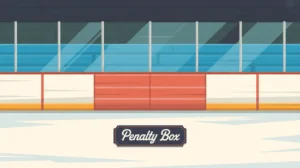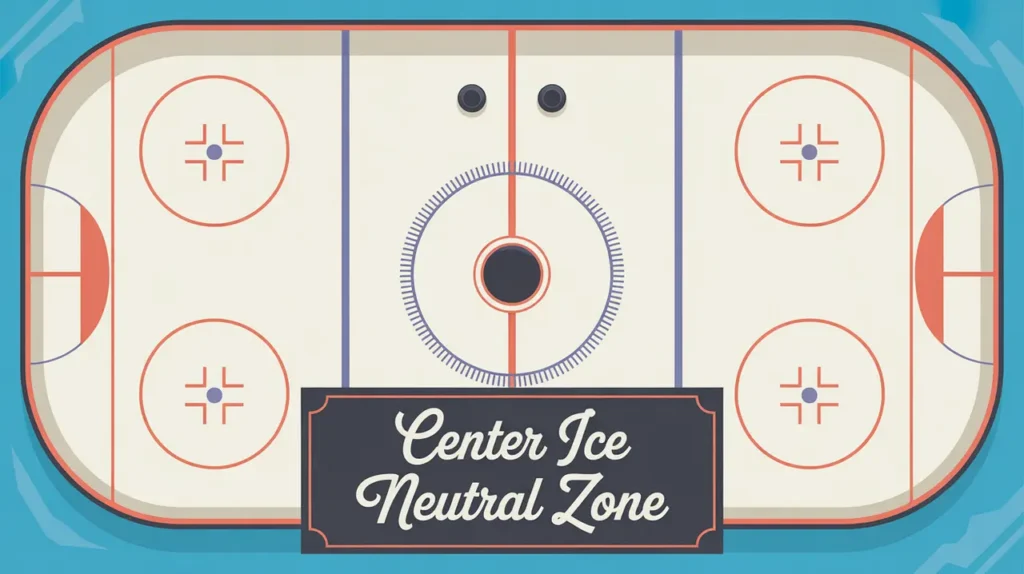Jim’s Intro to the Ice Surface and Dimensions
Hi folks, Jim here, the only commentator who once coated his living room floor with mayonnaise as a makeshift ice rink surface. It definitely was slippery, and tasty too.
What is the ice surface and what are its dimensions?
The ice rink is the stage where the entire game unfolds. Its size, markings, and structure shape everything from passing angles to defensive strategies. Most North American rinks follow NHL dimensions, while international rinks are slightly larger, affecting how the game is played. Understanding the surface isn’t just for referees and rink managers. It gives players better awareness of space, timing, and positioning.
- NHL Rink: 200 feet long by 85 feet wide
- International Rink: 200 feet long by 100 feet wide
The boards, glass, lines, and faceoff dots are all carefully placed to standardize play and strategy.
How does it work?
The ice surface is more than frozen water. It’s built and maintained in layers to create a fast, smooth, and consistent playing field.
- Base Layer: A thin layer of frozen water over concrete holds the painted lines and logos.
- Main Ice Layer: Several more thin layers are built up to reach about 1 to 1.25 inches thick.
- Dasher Boards and Glass: Contain play and keep the puck in motion.
- Zamboni Resurfacing: Between periods, the ice is shaved, watered, and smoothed to restore glide and speed.
The markings (blue lines, red line, goal lines, faceoff circles) create structure for offsides, icing, and positioning, giving hockey its unique flow.
How do you make good decisions with it?
Good players use the rink’s structure to their advantage.
- Know Your Zones: Offensive, defensive, and neutral zones shape strategy. The blue lines define where plays are set and where they break.
- Angles Matter: Smart players use boards and glass for bank passes, clears, and deflections.
- Faceoff Locations: Understanding circle placements helps anticipate where the play will unfold.
- International vs. NHL: Wider rinks encourage more puck possession and lateral play. Narrower rinks favor faster transitions and physicality.
- Ice Conditions: Reading fresh vs. chewed-up ice affects passing, stickhandling, and shot selection.
How do you master it?
Mastering the rink is about spatial awareness and adaptability. Players learn how to use every line, corner, and bounce to their advantage. They adjust their game as the ice conditions change. Fresh ice allows crisp passes; late-period ice requires smarter puck movement. Understanding dimensions helps with timing, whether breaking out of the zone or defending a rush.
What does it look like when done right?
Players who master the surface glide efficiently, anticipate plays using rink geometry, and seem to find open ice where others see traffic. They use the boards deliberately, control space with smart positioning, and adapt seamlessly to rink size and ice quality.
Commentator’s Corner
Jim’s Take
I’ve seen players who treat the rink like a blank sheet and others who treat it like a chessboard. The second group usually has the puck.
Parent Tip
Encourage players to learn the rink markings and what they mean. It builds game IQ early and helps them understand positioning.
Player Tip
Pay attention to the ice between periods. Know where the ruts form, how the puck is bouncing, and how to use the boards to your advantage.
A Final Thought
The ice is a part of the game itself. Understanding its dimensions, markings, and conditions turns the rink from a sheet of frozen water into a strategic map you can read and use.









